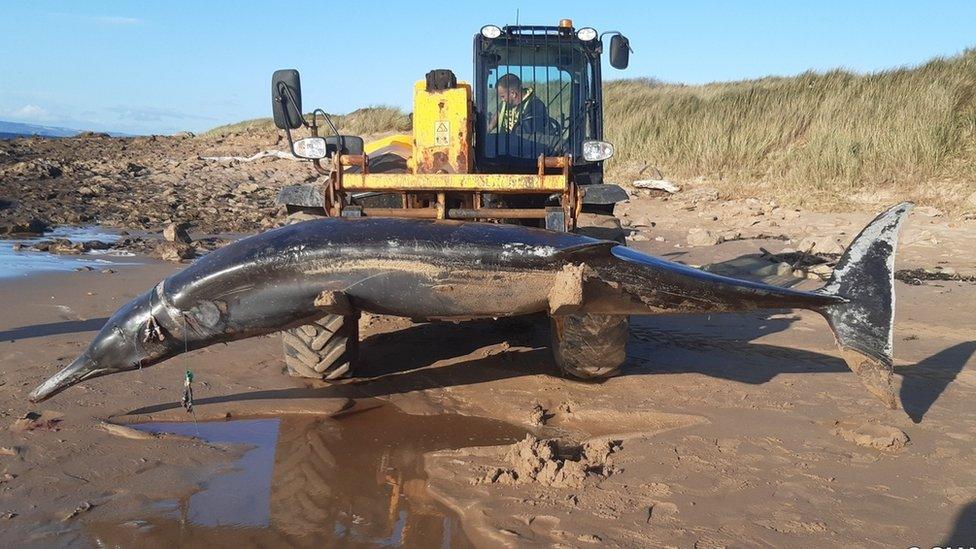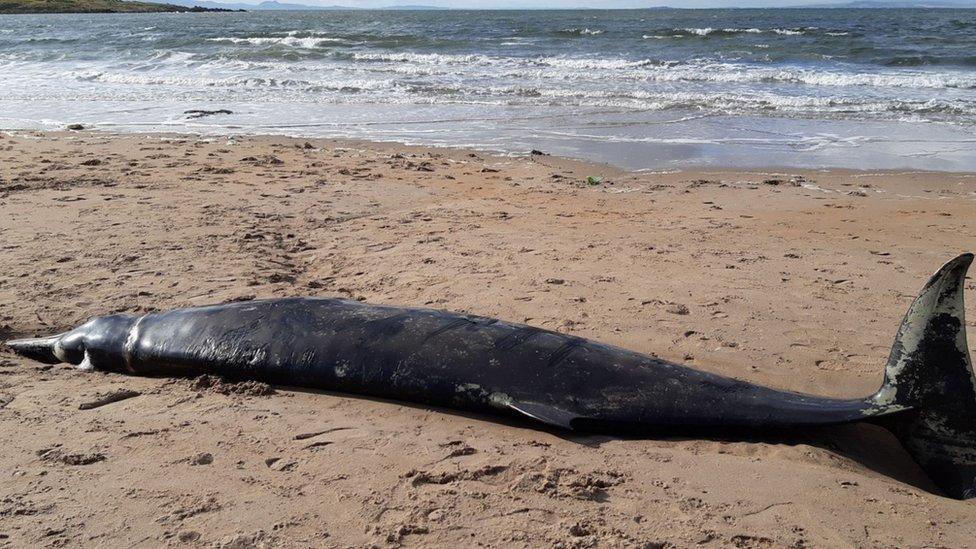Whale washed up in East Lothian had 'agonising death'
- Published

The 14ft female died at Gullane as a result of entanglement
A whale found on an East Lothian beach suffered some of the "most severe" entanglement wounds ever recorded on Scotland's coast.
The Scottish Marine Animal Stranding Scheme (SMASS) said the 14ft (4.2m), 102st (650kg) female Sowerby's beaked whale died at Gullane as a result of its injuries.
It was found on Saturday with a loop of rope embedded deep into its blubber.
It also had severe trauma to its right pectoral fin.
During a necropsy carried out on Monday, SMASS experts discovered the whale had been entangled long enough for the cord to work its way through the skin and blubber layer and into the underlying muscle layer.
In some places, the skin had grown over the top of the rope, while in others it had set up a deep tissue infection and abscesses.
There were goose barnacles attached to the rope - an indication, the experts said, that the entanglement had considerably slowed the swimming capabilities of the animal.

The whale had been entangled long enough for the cord to work its way through the skin and blubber layer
Based on the depth of the tissue trauma and the damage to the flank, the scientists said it was highly likely the loop around the neck had been attached to longer and heavier material.
Despite its condition, the whale had still been able to feed, although not much and not recently.
At some point over the last few days, it appeared the rope had become wrapped around the pectoral fin, dislocating the shoulder joint and fracturing the pectoral fin.
'Ghost gear'
Dr Andrew Brownlow, who heads up the Scottish Marine Animal Stranding Scheme, said it was unable to swim effectively and most likely was in a large amount of pain when it became stranded and died.
He said: "This is the ninth cetacean entanglement we've seen this year and one of the worst we've ever encountered.
"This animal suffered for a long time, certainly weeks, possibly months and died what we can only assume was an agonising death.
"It's not possible to work out where the rope came from, but it is similar to the type of material used in both recreational and commercial creel and net fisheries."
He said that those involved in the fishing industry were in a position to address the problem of ghost gear and rope debris in the water, pointing out successful initiatives such as Fishing for Litter.